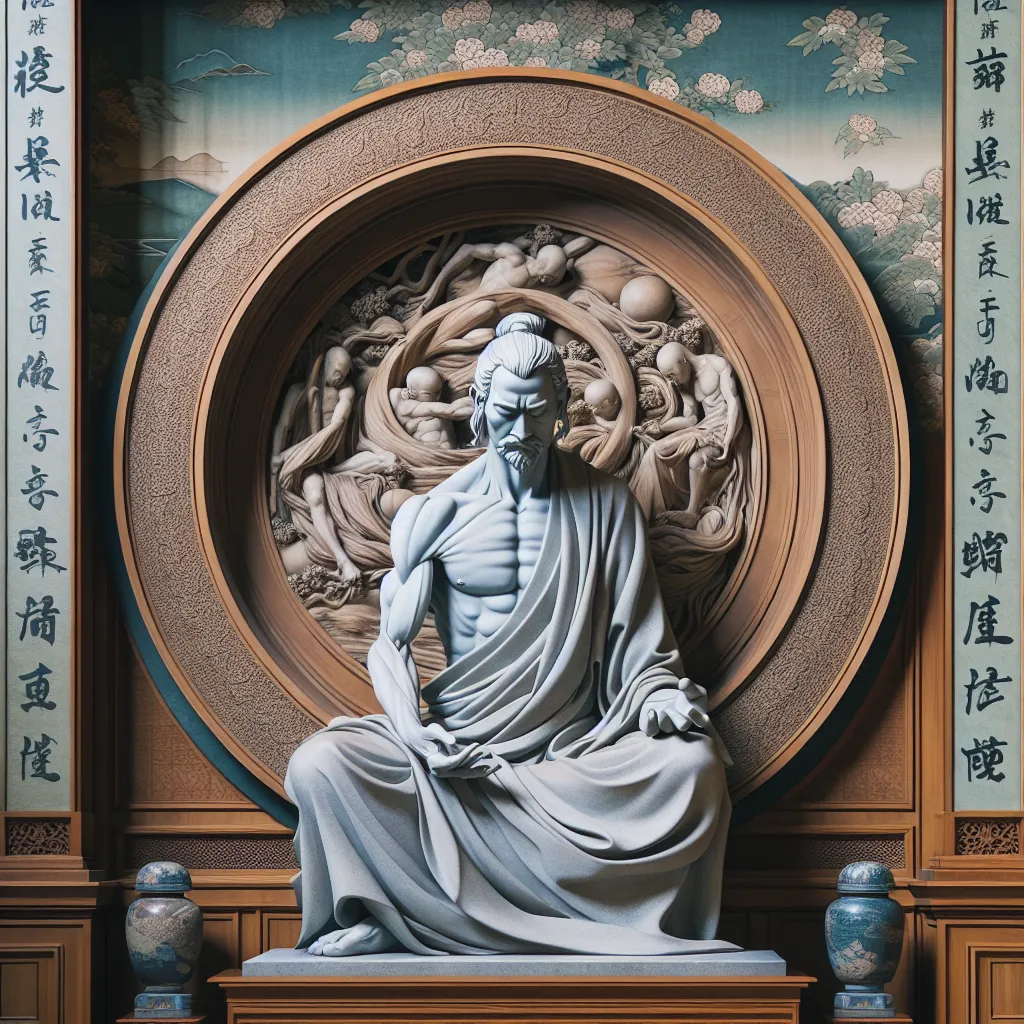
- Published on
- Authors

- Name
- You
The Life and Teachings of Hakuin: Reviver of Rinzai Zen
Introduction
Hakuin Ekaku (1686-1769) stands as one of the most significant figures in Zen Buddhism, credited with the revival and revitalization of the Rinzai school of Zen. His life's work encompassed not only rigorous meditation techniques but also the creation of profound Zen art and literature. This article delves into the intricate details of Hakuin's life, his teachings, and enduring legacy.
Early Life
Born in Hara, Hakuin was initially inclined towards the spiritual life from a young age. Witnessing a graphic depiction of hell in a Buddhist temple at the age of 7 spurred his intense desire to seek enlightenment and to understand the nature of suffering and its liberation.
| Year | Event |
|---|---|
| 1686 | Birth in Hara, Japan |
| 1693 | Vows to become a monk at age 7 |
| 1700 | Joins the Daishoji Temple at age 15 |
Hakuin's Zen Journey
Hakuin's quest for enlightenment was marked by severe ascetic practices and a relentless search for truth. His journey eventually led him to the practice of koans—a system of paradoxical questions and statements designed to transcend conventional thinking.
The Role of Koans
Koans, integral to Rinzai Zen, challenge practitioners to break free from logical constraints and attain direct realization.
- Meditative Depth: Hakuin emphasized deep meditation integrated with the contemplation of koans.
- Spiritual Awakening: His famous koan, "What is the sound of one hand clapping?" epitomizes this approach.
Reviving the Rinzai School
At the time of Hakuin's adulthood, the Rinzai school had been in decline, overshadowed by the Soto school of Zen which emphasized silent illumination. Through his fervent teachings and restructuring, Hakuin reinvigorated Rinzai practices, making them accessible and profoundly impactful.
Core Principles
Hakuin's teachings emphasized:
- Dynamic Zen Practice: Balancing zazen (seated meditation) with physical work and everyday activities.
- Functional Meditation: Integrating meditation into day-to-day life challenges.
- Moral Conduct: Emphasizing the inseparability of ethical behavior and spiritual practice.
Contributions to Art and Literature
Hakuin's influence extended beyond spiritual teachings into the realms of art and literature. His brush paintings (sumi-e) and calligraphies embodied Zen principles and communicated profound truths in simple forms.
Zen Art
Hakuin's art featured:
- Simplicity and Profundity: Using minimal brush strokes to express deep meanings.
- Iconic Images: Such as Daruma (founder of Zen) and meditation figures, evoking spiritual contemplation.
| Art Form | Description |
|---|---|
| Sumi-e | Ink wash painting capturing Zen essence |
| Calligraphy | Expressive writings embodying Zen teachings |
Literary Works
Hakuin produced numerous writings that blend poetic expression with Zen instruction.
- "Yasenkanna": A seminal text blending personal anecdote and Zen teaching.
- "Orategama" ("Idle Talk on a Night Boat"): Illuminating his teaching methods and anecdotes.
Enduring Legacy
Hakuin’s revitalized teachings form the backbone of contemporary Rinzai Zen practice across the globe. His integration of rigorous meditative exercise with everyday activities continues to resonate with modern spiritual seekers.
Conclusion
Hakuin Ekaku’s life and teachings have left an indelible mark on the world of Zen Buddhism. His dedication to the revival of the Rinzai school, combined with his contributions to Zen art and literature, enrich the spiritual tapestry of human history. Through a blend of mystical insight and practical wisdom, Hakuin’s legacy endures, guiding countless individuals on their journey towards enlightenment.
For further reading, consider exploring Hakuin's primary texts and the works of contemporary Zen scholars who elucidate his rich contributions to Zen Buddhism.
